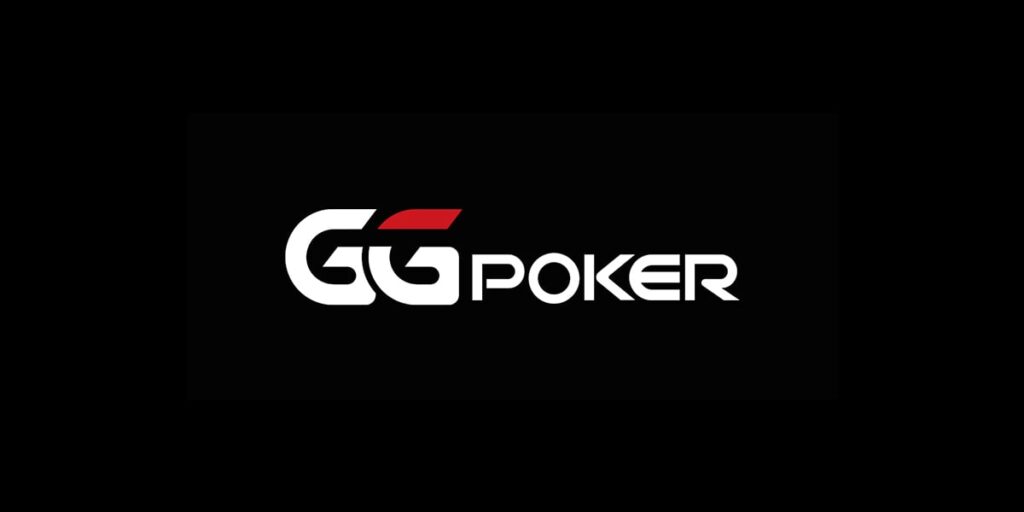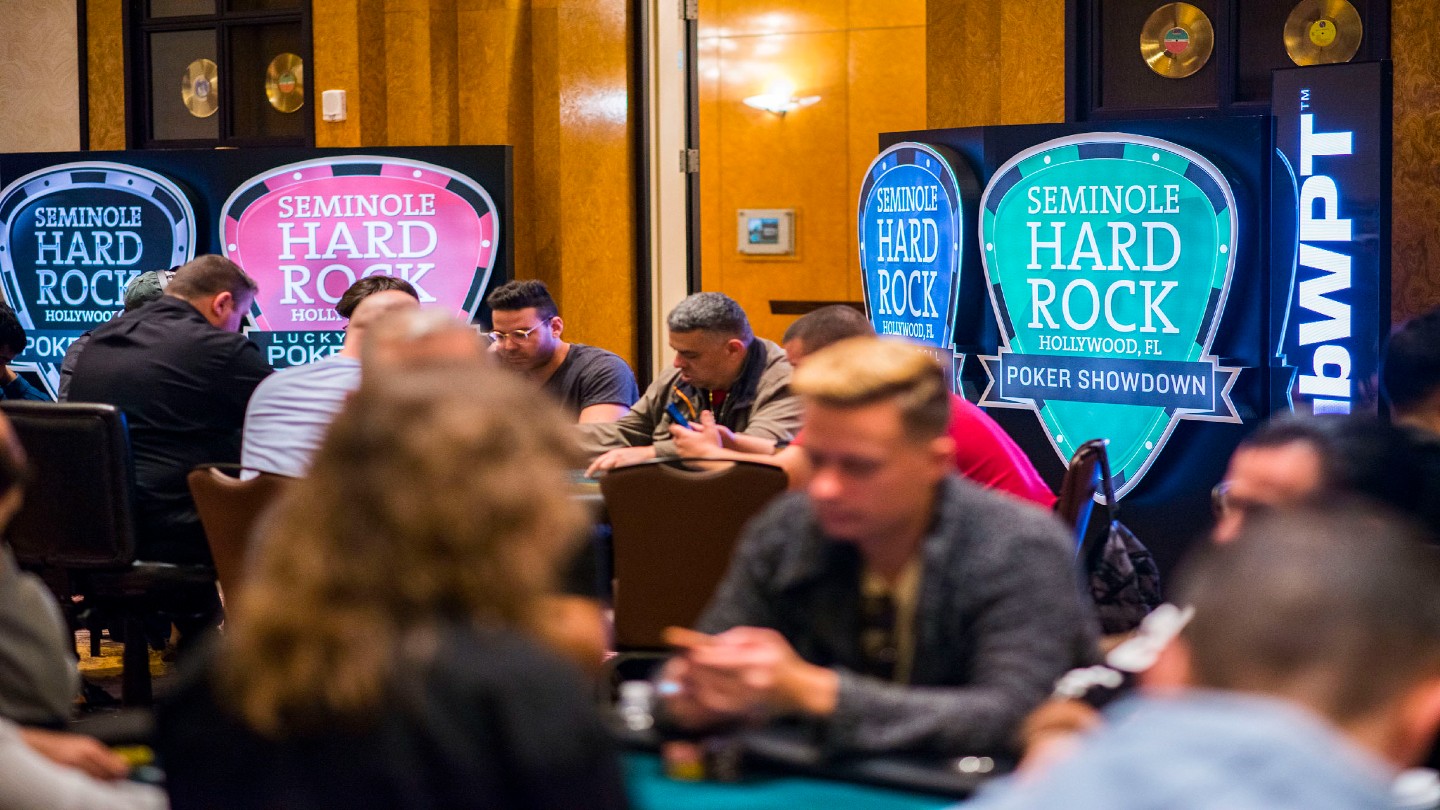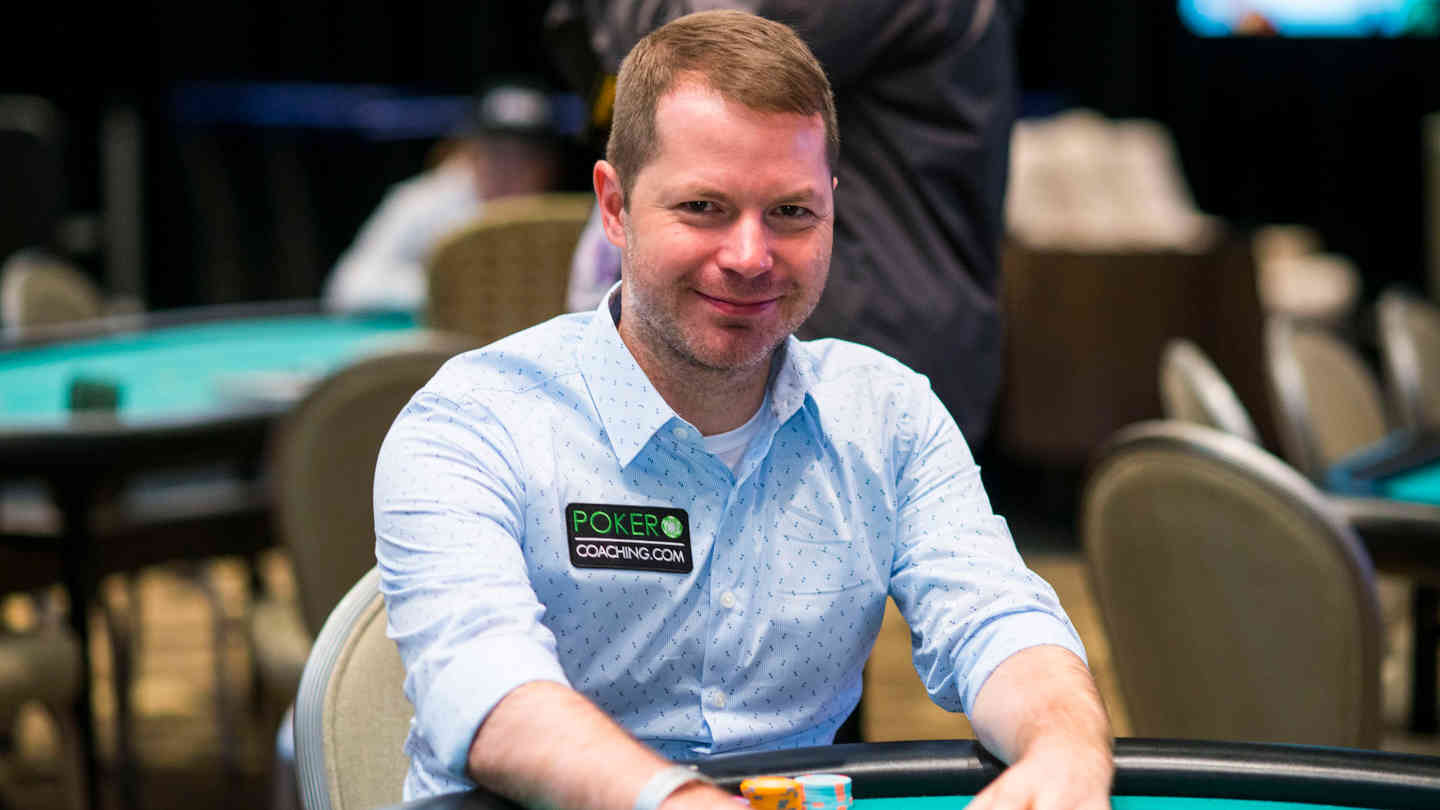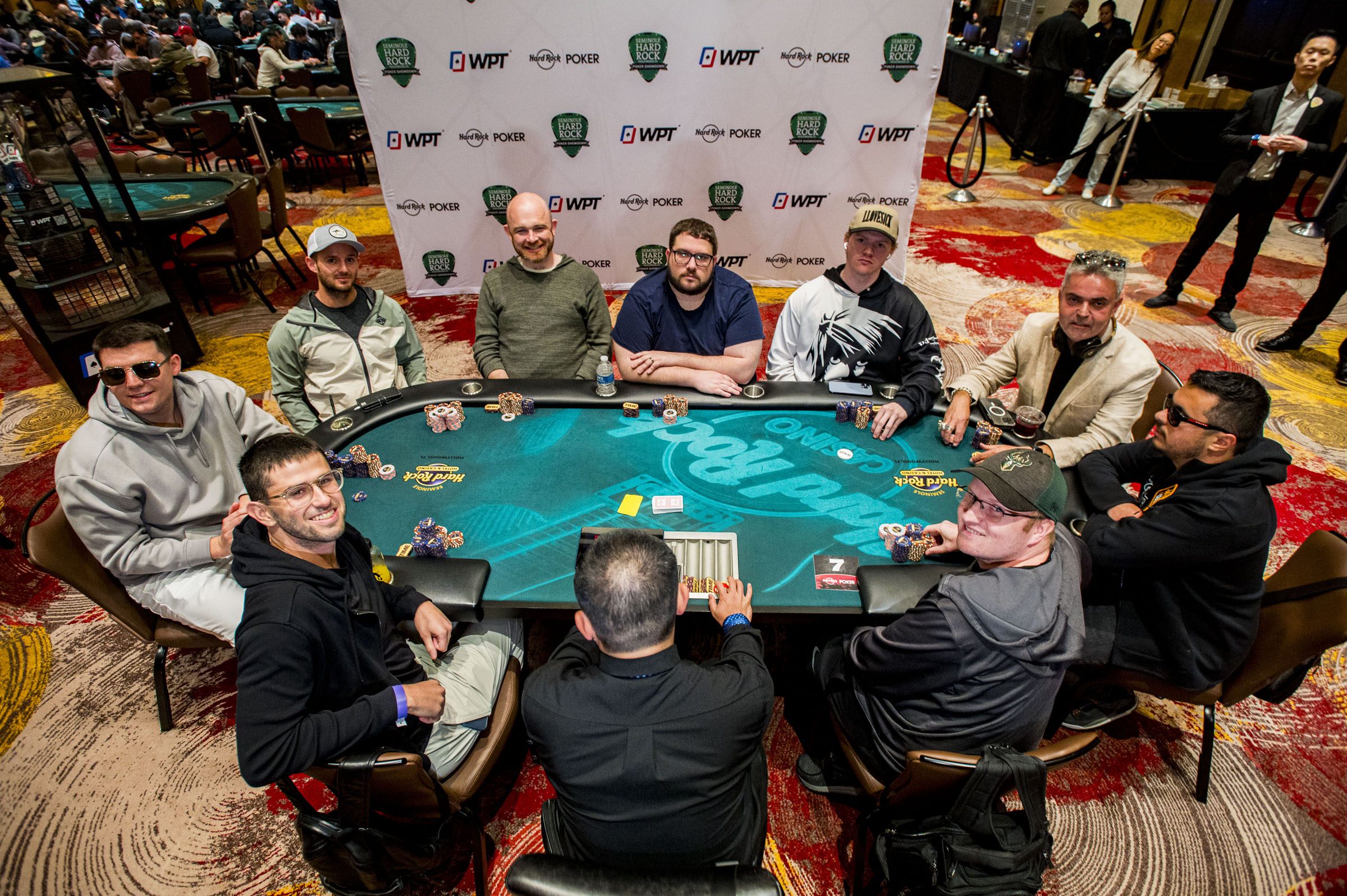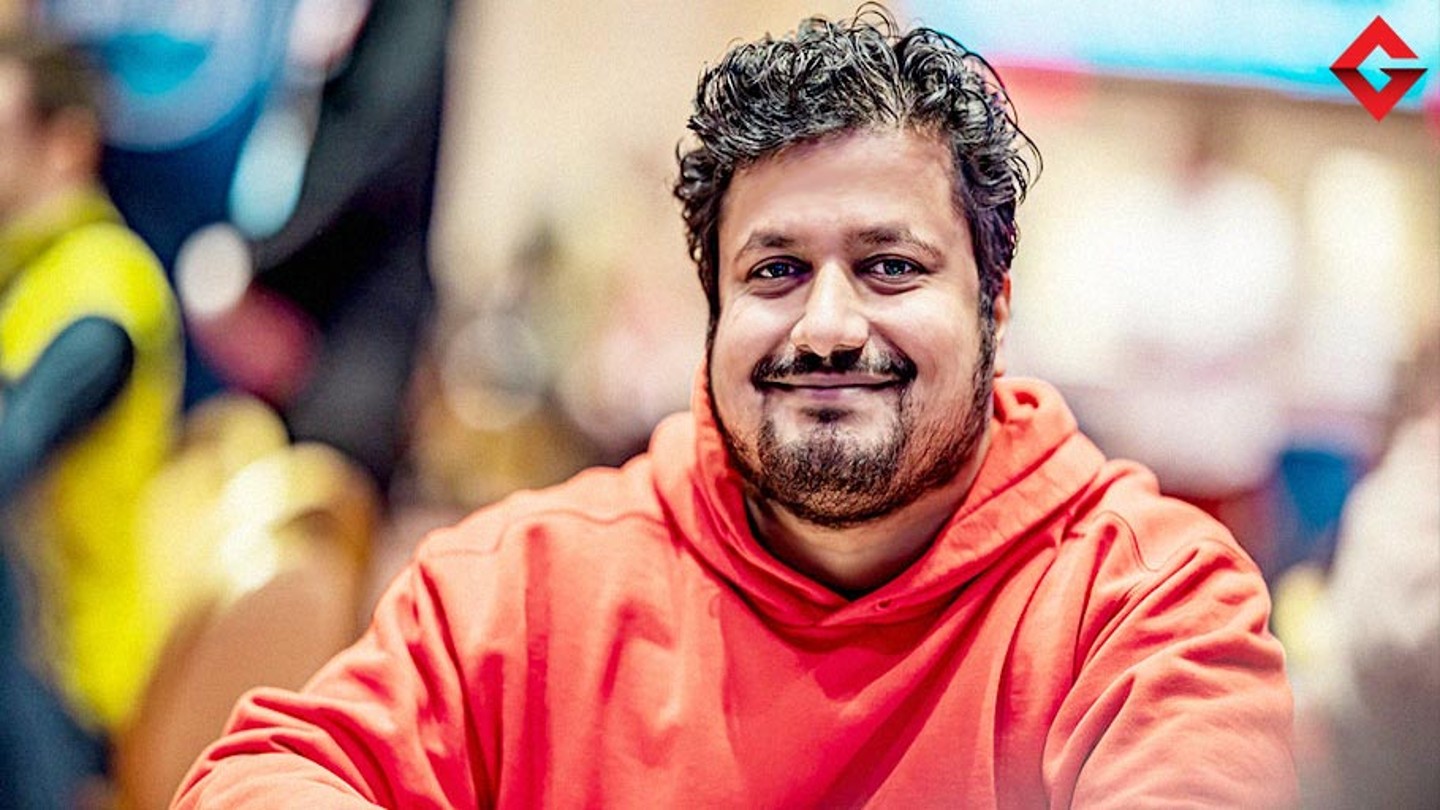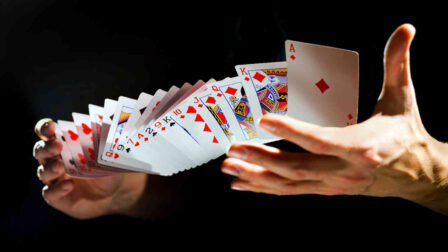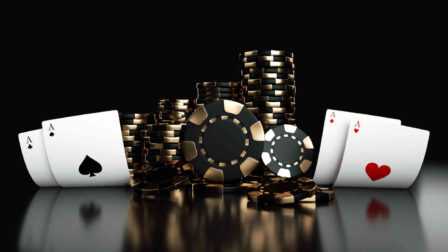Poker Cash Game Strategy: Top 10 Tips from the Pros
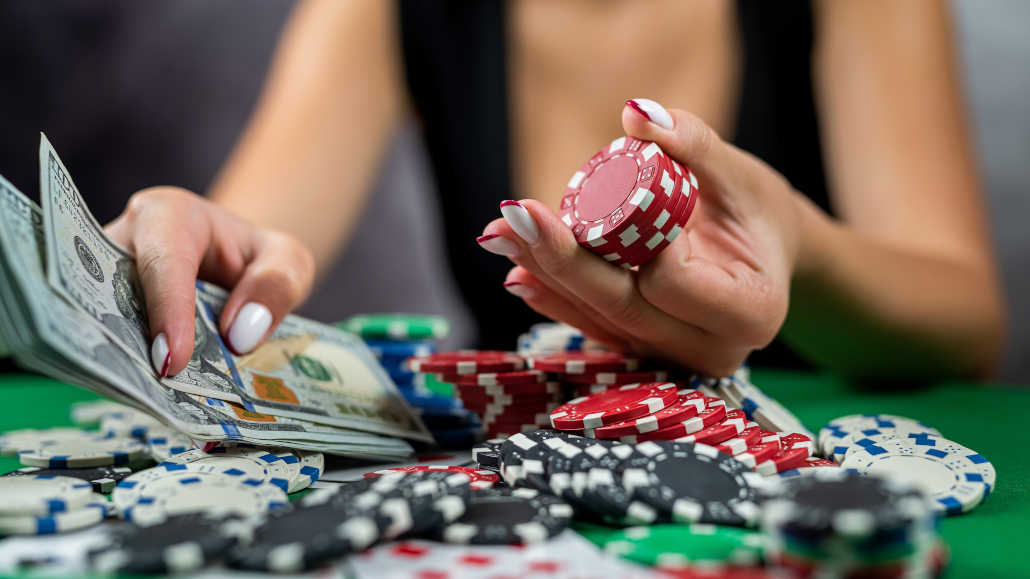
18 minutes
Last Updated: January 23, 2024
Cash game poker is one of the purest forms of the game as it leaves more maneuvering space and makes every hand played a completely unique event.
Unlike tournament poker, where you may have to worry about being busted if you make one wrong call, cash games allow you to be wrong on occasion and still keep going.
Many online poker players and live games enthusiasts prefer cash games over tournaments, and if you are one of them you have come to the right place for useful wisdom from our poker pros.
These are the top 10 poker cash game strategy tips that will help you win more often and become a long-term winner in cash game poker.
- Tip #1 – Aggression wins
- Tip #2 – You have to keep studying
- Tip #3 – Adjust to your games
- Tip #4 – Only play when you feel ready
- Tip #5 – Know when to quit
- Tip #6 – Prepare for your sessions
- Tip #7 – Isolate limpers aggressively
- Tip #8 – Don't slow play too often
- Tip #9 – Expand your bluffing range
- Tip #10 – Control the size of the pot
In this article, we break down all ten of these cash game tips with plenty of examples, so make sure to read how you can improve today.
Cash Game Tip #1 – Aggression Wins in Poker
While there are many different approaches that can work in cash game poker, playing aggressively is definitely the best way to go.
Whether you are playing against competent opponents who will run you over if you are too passive, or against fish who you can easily scare off their hands, playing aggressively is one of the best poker tips you can get.
This is not to say that your cash games strategy should not also include some calls and checks, but aggressive actions should definitely be a lot more frequent.
By playing aggressively, you get to win the pot before the flop quite often, build the pot up before taking it down on later streets, and put your opponents to the test, forcing them to make difficult decisions.
On the other hand, players who play too passively often end up losing pots that they could have easily won and generally don’t find themselves on the winning side of things too often.
Keep in mind not to take aggression too far, as playing like a maniac is not the right approach either. Try to balance your poker ranges, but adapt to the game and add exploits into your play when possible.
⭐ Aggressive Play Example
Playing in a $2/5 live cash game, you are dealt J♣10♣ on the button. The player in the Hijack opens to $15, and the action is on you.
While many players choose to just call with their highly playable hand in position here, taking the aggressive approach is often better.
You will see top players these days routinely 3-bet these types of hands for multiple reasons, including:
- You can win the pot preflop
- You can represent a stronger range on the flop
- You can disguise the strength of your hand
- Your range will be more balanced
Instead of just calling, top pros 3-bet this hand to $50, allowing them to win the pot preflop against hands like KQ or A8s at times or take the initiative moving to the flop. Assuming your opponent calls you, you go to the flop.
The first community cards: A♦7♠9♣
Your opponent checks, and the action is on you. You hold nothing but a gutshot straight draw, but having 3-bet before the flop, your range now contains hands like AA, AK, and AQ, all of which have smashed this flop.
Had you just called before the flop, you would be in a less favorable position to win the pot on this and many other flops.
Continuing with a c-bet on this flop is the aggressive way to go, and it gives you options to continue bluffing on many turns and rivers, depending on the cards that peel off.
By playing aggressively you will put yourself in better positions than your opponents and give yourself more opportunities to win pots, even against superior hands.
Cash Game Tip #2: Never Stop Studying

Of all the cash game poker tips I can give you, this is probably one of the most valuable ones! Always keep learning more and improving your game.
Many of your opponents will be doing the same, and failing to study yourself will end up with everyone else getting better except you.
Players who don’t study will remain on the same level, while you will be able to move further away in your poker understanding and make even fewer mistakes.
This will make you an even bigger winner in the games.
Poker is a game that’s always evolving and changing. Thus, learning new strategies and ways to adapt to other players’ strategies is key to long-term success and survival. If you want to take this part seriously, make sure to check out poker training sites and poker software that can significantly speed up the process.
Cash Game Tip #3 – Adjust to the Game
While there used to be a time when adapting to the game was the standard, many modern players chose the “GTO” approach instead, trying to play a perfectly balanced game that cannot be exploited.
There are many problems with this cash game strategy approach, the biggest of which is that no human can replicate the GTO poker strategy.
For that reason, trying to play perfectly balanced means risking playing a very average game while missing out on tons of exploits.
Instead, you should make sure to always be hyper-focused on everything that’s going on around you and adjust to the game you are actually in.
By carefully monitoring how your opponents are playing, you can adjust your strategy in ways that are very far from GTO but will make you a lot of money in the long run.
⭐ Example of Adjusting in Cash Games
Playing in a $1/3 live cash game at the local casino late in the night, you are seated to the right of two players who are playing extremely loose and making tons of 3-bets and 4-bets before the flop.
To make things even more interesting, their re-raises are quite massive, as they are out there having a good time, drinking, and having some laughs.
Sitting in the early position, you are dealt A♠10♣, with a stack of about 150 bb. Normally, this is a hand you would want to open, probably to $10, but let’s consider that again.
If the two opponents to your left are likely to make it $50 after you open to $10, hands like As8s become much less appealing to open.
You will rarely steal the blinds, and you will often be forced to fold your hand before the flop or risk gambling your entire stack against an unknown hand.
While raise/shoving could possibly be a profitable play in this spot, there is an even better approach to this kind of situation in live poker cash games.
Simply fold your A♠10♣ and wait for a much stronger hand to open. Your opponents are not looking at what you are doing and are likely to 3-bet you even if you fold 30 hands in a row.
Be patient, wait for a big hand, and trap the maniacs instead of falling into their trap and gambling with them in a spot where your edge is minimal.
Cash Game Tip #4: Don’t Play Games That Make You Uncomfortable
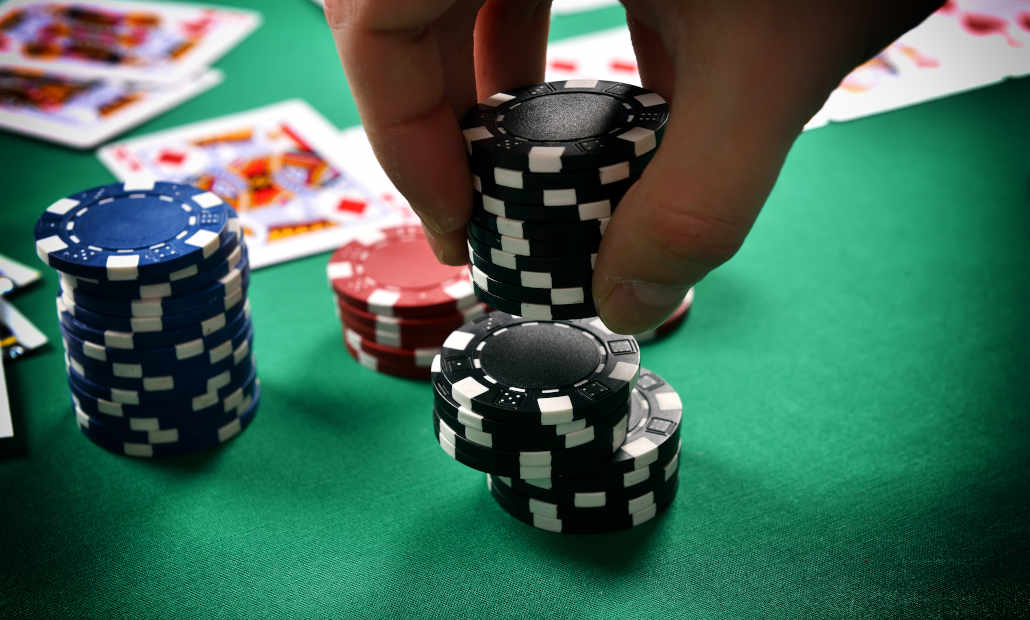
Most cash game strategy tips I can give you have to do with the technical approach to the game, but there is something to be said about things that have nothing to do with cards.
Whether the stakes are too high, you don’t like the company, or the game is simply not playing the way you enjoy, you should not be sitting in the game.
One of the most important elements of playing profitable poker is being relaxed and focused on the game, and you can’t do this if you are not comfortable with the game you are playing.
Live cash game players often try to kick up the stakes, add straddles, or simply start playing wildly.
While it is completely fine to stay in the game if you can afford it and are not uncomfortable with this kind of situation, quitting the game is also perfectly fine.
You should remember to play within your poker bankroll and adjust for variance, which means you can’t play too high at any given time, and that’s only one of the many reasons not to play in a game that makes you uncomfortable.
⭐ Example for Quiting Your Poker Session
You are playing in a $5/10 game and bought in for $1,000, taking a shot from your normal stakes. Most other players bought in for $1,000 as well.
After five hours of play, you are winning $3,800 when two new players sit at the table, buying in for $5,000 each.
The two players seem to be professionals who play very aggressively by making big raises and posting straddles, effectively making the game much bigger than when it started.
This can make many players very uncomfortable, especially if they are taking a shot at the game and don’t have the bankroll needed to support it.
If you feel uncomfortable in this scenario, getting up from the table and walking away with a profit is perfectly fine. Games are not going anywhere, and you can return to play another day.
Cash Game Tip: #5 Be Willing to Quit
Cash game poker can be ruthless when it comes to variance, and you will run into sessions where you are losing every hand no matter what you do.
When sessions like this do come along, you should be willing to quit at some point and take time to regroup, but the real question is when?
You don’t want to quit every session after you lose a couple of buy-ins, as this will mean you are not getting much volume in, which is critical for success.
On the other hand, if you play too long and end up getting tilted, you could lose money you didn’t need to by not playing good poker.
Finding the right balance can be difficult, but you should make sure that you quit before you go on full tilt and while still playing reasonable poker.
If you catch yourself chasing against the odds or making silly bluffs you know will get called, it’s time to call it quits and take some time off.
Time away from poker can do miracles and put things back into perspective. It will allow you to come back fresh and play great poker again.
Cash Game Tip #6: Get Ready for Your Sessions
Before you sit down to play poker, it is always wise to take some time to get into the zone. You can do this by watching a quick coaching video or looking over some recent poker hands and thinking about your overall cash game strategy.
Some players choose to meditate or use other techniques to get into the right state of mind, and this can be different things for different people.
It can also be wise to actually jot down a list of the most frequent mistakes you have made in previous sessions and think about how you could avoid them in this one.
I recommend taking at least 15 minutes to do all this before you actually get dealt in and play your first hand of poker.
Jumping straight from watching a movie into playing poker can lead to some funky play early in the session. This, in turn, can lead to unnecessary losses of both money and confidence right out of the gate.
Cash Game Tip #7: Isolate Limpers Frequently
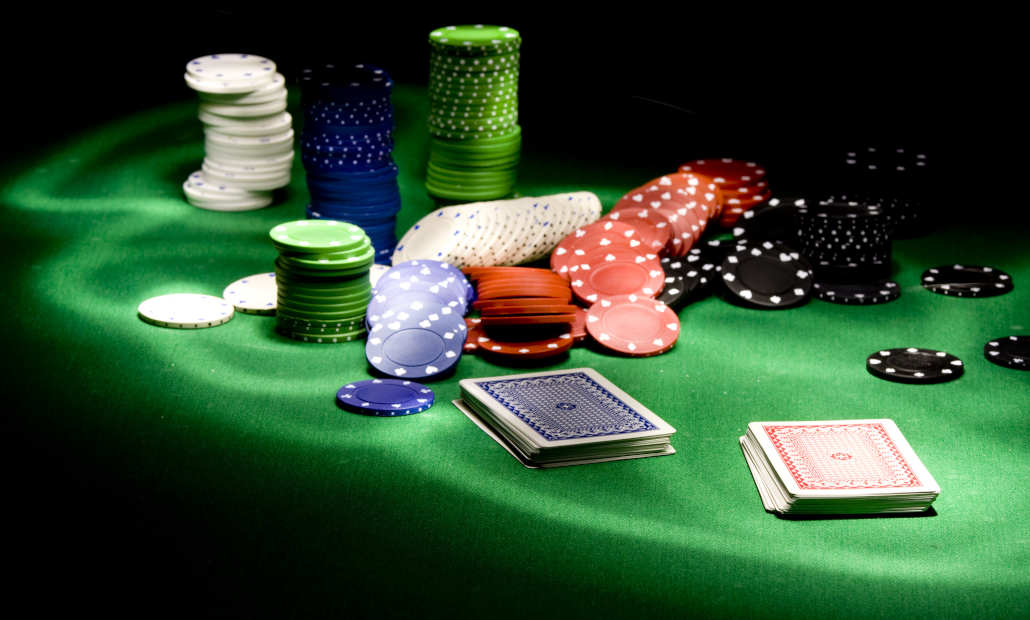
Since limping is one of the weakest plays in poker, you should not employ this move when you are the first player into the pot.
However, many players limp quite frequently and will actually limp a very unbalanced range, practically always having medium-strength hands when they limp.
When playing cash games, you should prioritize looking out for players who limp their medium-strength hands often and isolate their limps whenever possible.
By raising to 4-5x over the top of limps, you will get many calls from hands like 9♦8♠ or 6♣5♣, which will be forced to fold on the vast majority of boards to your continued aggression.
If you were to only overlimp with hands like K♦8♦ or J♠9♠, you would be allowing the small blind and big blind to also see the flop at a great price, denying you some of your equity. Therefore, you should aggressively isolate limpers when you page position at the poker table.
⭐ Isolating Example
You are playing in a $0.25/0.50 game online with stacks of 100 bb. A chronic limper who has been limping many hands limps in UTG+1, and the action folds to you on the button.
Holding Q♣8♣, you raise to $2.25. The small blind and big blind fold while the limper snap calls the raise, taking you to the flop.
The flop comes: A♣9♦5♠
While you have missed this flop quite heavily, chances are that your opponent has as well. Once they check, you can often win the pot by firing out a small c-bet of just $1.50 or so.
Your opponent could be holding a hand like 44, JT, 87, and many other hands that will either fold right now or fold on further streets to your continued aggression.
Of course, make sure not to go too far with this, and remember to keep an eye out for how the board develops that could favor your opponent’s range.
Yet, on many boards, by being the preflop raiser, you will maintain the advantage and the range advantage, allowing you to win a lot more often than you lose.
Cash Game Tip #8: Don’t Slow Play Your Big Hands
If you learned how to play poker back in the day, you might have read poker books by Phil Hellmuth that talk a lot about trapping your opponents. While setting traps is a part of any good cash game strategy, a competent player should be playing big hands aggressively most of the time for more than one reason.
Slow playing your hands before the flop will allow your opponents to see cheap flops with speculative hands, and the large stack-to-pot ratio will make it so that you will often end up being the one getting trapped.
Furthermore, by not making big raises in good time, you will often miss out on a lot of value against inferior hands, as board textures can develop that prevent you from getting paid.
Finally, if you don’t make big bets and 3-bet or 4-bet, it will be very difficult to balance out your bluffs, as your opponents could pick up on the fact you are trapping a lot with your mediocre hands.
⭐ Example of Playing Fast in Cash Games
Playing in real money poker apps at a $1/2 game, you are dealt A♣A♦ in UTG+1. You raise to $5, and the player on the button raises to $20, with the effective stack of $370.
Many players are tempted to flat call their AA in this spot because the button’s range will be made up of many hands that may fold to a 4-bet.
However, if you decide to just flat call, you will allow your opponent to see the flop with all of those hands for just $20 while there is still $350 behind in their stack.
While you may get some extra value when they flop top pair with a hand like KQ, you will also miss out on a lot of value from hands like KK, QQ, or JJ on many board runouts.
Raising it to $50 right now will make the hand a lot easier to play out of position and force your opponent to make the tough decision.
This re-raise with AA also allows you to make similar re-raises with hands like A2s or A5s, which you can use as bluffs in similar situations.
Cash Game Tip #9: Expand Your Bluffing Range
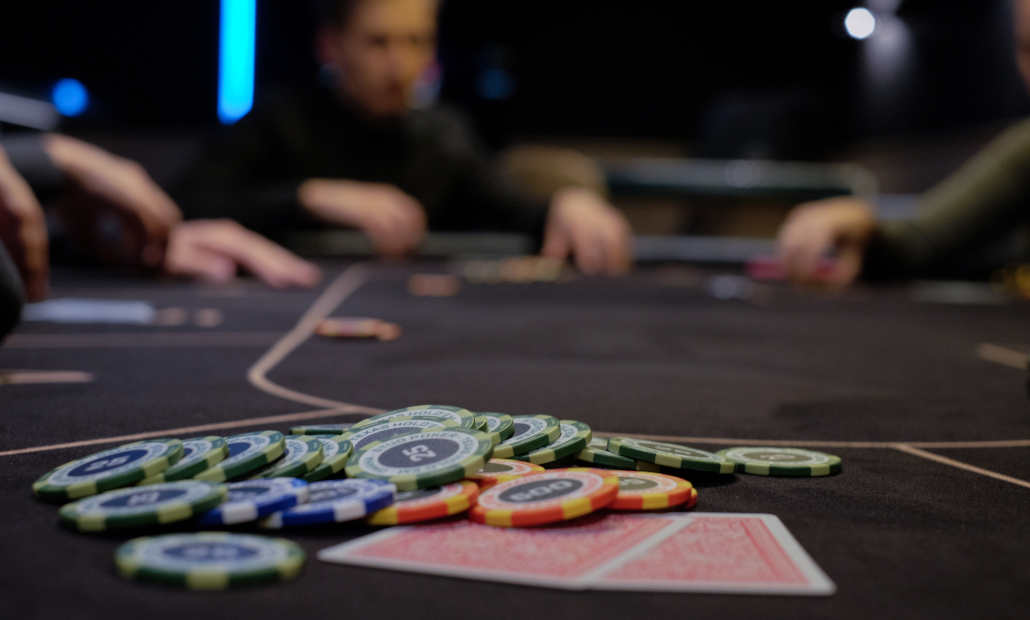
According to one of the world's best heads-up poker players, Doug Polk, one of the biggest mistakes players make is that they don’t bluff enough. This might sound counterintuitive, as some players out there seem to bluff way too often, but they are often just spewing their money away and picking terrible situations to bluff.
You should strive to create bluffing ranges that make sense and increase your profit in the long run.
To begin with, you should make sure to always include big drawing hands, such as flush and straight draws in your bluffing range, but this is not where it ends.
Top poker players find good spots to bluff with gutshot straight draws, bottom pairs, and backdoor straight draws, all of which have relatively little equity against the top hands in your opponent’s range.
With these hands, you will look for folds more often than with big draws, but you will also give yourself more opportunities to win pots by bluffing.
⭐ Bluffing Example:
Playing in a $2/5 game at a live casino, you are sitting with a stack of $1,100. An opponent with a similar stack opens the cutoff to $15, and you call in the big blind with 8♦7♦.
The flop comes: 10♦5♠4♠
On this flop, you hold only a gutshot straight draw and a backdoor flush draw, but the pot is far from over.
You check to your opponent, and he decides to fire out a $20 bet into the $32 pot, a move he would probably make with most of his opening range.
While many players just fold this hand or call to peel a card, raising in this situation is a very profitable play.
Your opponent’s opening range has not connected with the board too well. While both of you still have quite a few strong hands in your range, he has more likely missed the flop completely.
By raising to $70 or more right now, you will allow yourself to barrel many turn cards, including spades, diamonds, sixes, and potentially other cards as well, along with often winning the pot right away.
Most opponents will fold their AK, AQ, AJ, KQ, KJ, QJ type hands to this raise right away, and against the more stubborn ones you will have plenty of ways to win the pot on turn or river.
By adding a hand like this to your bluffing range, you will make yourself more unpredictable, you will get paid on your monster hands more often, and you will get to win plenty of pots other players would have lost.
Cash Game Tip #10: Learn How to Control Pot Size
The last of the ten cash game poker tips I will share today has to do with pot control, and it’s one that can’t be overstated.
Novice players often have a tendency to make raises with medium-strength hands like top pair/weak kicker on the flop, and this can lead to some very awkward spots.
Instead, you should go for those big bets and raises when you have the strongest parts of your range or when you are bluffing.
Everything in between can be used for pot control.
By simply calling bets from your opponents or checking such hands in multiway pots, you will allow yourself to get to the river for a more affordable price and not lose too much when you are dominated.
When thinking about a flop raise, ask yourself whether you can get value on further streets as well if this raise gets called and you have the best hand. If the answer is no, you probably should not be raising.
Learning when to pot control and when to fire from all cylinders is a part of any good cash game strategy and something you will have to learn if you want to be a successful cash game player.
⭐ Example of Controlling Pot Size in Cash Games
Playing in a $0.10/0.25 cash game online, you are dealt A♥Q♥ on the button. UTG raises to $0.75, you re-raise to $2.5, and UTG calls.
The flop comes: A♣5♦4♥
With $5.35 in the pot, your opponent checks, you bet $1.50, and your opponent calls.
The turn is the 10♦, and your opponent once again checks. There is $8.35 in the pot, and you have the action. Most players continue with a bet here, but this might be a great spot for some pot control.
While you are very likely to have the best hand here, it is important to ask yourself some questions. What can my opponent call me with? What draws can he have? What hands could he be trapping me with?
Some hands that could possibly give us action include AJs or A9s, if these hands decided to call our 3-bet, which is a big if. On the other hand, hands like A5s, A4s, 55, 44, and ATs are also in our opponent’s range.
The only obvious draw being 76s, there is not too much in terms of draws we need to protect from. For that reason, a turn check seems like a pretty good option.
By checking the turn, you will allow yourself to sometimes get value on the river from a hand like JJ or 99 and get bluffed by missed straight draws. At the same time, you will avoid getting raised on the turn and making a tough decision in a spot that does not favor you.
While I highly recommend playing aggressively in most cases, it is important to find spots when pot control is the right play and balance out your game in this way.
Optimal Cash Games Strategy – Putting It All Together
Cash game poker is a very complex game that requires many different strategic adjustments and non-stop attention from the players.
However, if you apply the cash game poker tips I have shared with you here the next time you play Texas Holdem, you will have a much better chance of coming away as a winner.
It’s important to remember that even the best poker players in the world have losing cash game sessions. So, make sure you always play your best game and don’t be too results-oriented.
Put all my cash game tips together when forming your cash game strategy, and remember to have fun with it, play within your bankroll, and keep improving your game until you finally become a consistent winner!






